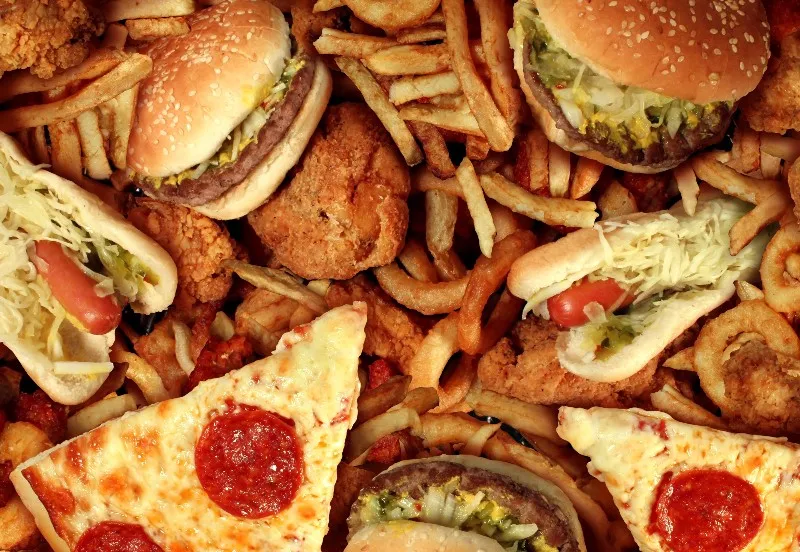As a qualified personal trainer and health coach I’ve evaluated a lot of diets and meal plans over the years. I always ask “So what is your diet like?” And the most common response is… “Oh my diet’s pretty good blog for cooking.” It’s not until we delve deeper into what people are consuming on a daily basis where we start to realize that their diet wasn’t that healthy after all.
Just because a food product is sitting on a supermarket shelf doesn’t mean that it’s OK to eat. Think about it… Children can eat crayons but we don’t call crayons food. Therefore, why are we putting so many lifeless and nutrient devoid foods as well as many known toxins into our bodies these days?
The food companies certainly don’t make it easy. Most of the food labels don’t make much sense due to all the codes and unpronounceable names. But did you know that there are legal loopholes where manufacturers can add certain ingredients and chemicals to the product, but state on the label that the product doesn’t contain those ingredients at all? Ridiculous isn’t it!
As you read on you’ll come to realize why more and more people are starting to eat fresh and healthy unprocessed foods to avoid these disgraceful ingredients. Below I’ve outlined 8 dangerous and shocking ingredients hidden in your foods that you should be aware of.
Yes you read correct… Anti-freeze is what goes into the radiator of your car so it won’t over heat but also won’t freeze up in colder climates. It’s called propylene glycol, also known as propane-1,2-diol or E1520. It’s a chemical that has many industrial uses such as Corexit, which is an oil dispersant used for oil spills in the ocean. It’s also used in pharmaceutical drugs and cosmetics, right through to many ice creams.
Luckily for the folks in the European Union, they have not cleared propylene glycol as a food additive or food grade product. My advice, make your own ice cream and stop consuming products that contain this chemical.
Proteins are the building blocks of life and are made up of amino acids. Although they are good for your health, I’m sure you’d agree that there must be a better way to extend the shelf life of some products other than using human hair or duck feathers.
The amino-acid L-Cysteine is used to prolong the shelf life of many products such as commercial breads. The L-Cysteine that is used to prolong these foods often comes from duck and chicken feathers as well as horns from cows that have been slaughtered. However the most commonly used version comes from human hair. Yes, you read that correctly.
Reports have shown that the hair used to derive L-Cysteine mostly comes from China, where it’s collected from hair salons and barber shops, then processed. Most fast food chains add this form of L-Cysteine to their burger buns and rolls.
To avoid consuming human hair or duck feathers in your foods, try buying freshly baked breads from your local baker as L-Cysteine isn’t in the flour, but added to the mix during production of breads and the like. Even better, make your own.
Arsenic is a known carcinogen, which means that it causes cancer in living tissue. The unfortunate thing about this toxic element is that it seems to keep showing up in our food supplies. It’s in everything from breakfast cereals and rice, through to fruit juice and your drinking water. Sometimes at levels up to 2 – 3 times what is considered safe. It’s also been shown to be in many protein powders. Yes, you read that correctly as well… those expensive protein powders that many people waste their money on have been shown to contain this toxic element amongst others.
Many wines and beers have also been shown to contain arsenic, mostly the clearer ones. To filter these beverages they use diatomaceous earth, which is a natural product but it contains iron and other elements, such as arsenic.
Most people don’t realize that some of the flavors used in your favorite ice creams amongst other things, comes from the castor sacs of beavers, which is located at their rear end of the animal. This secretion is called castoreum and is used to mark the beaver’s territory. Due to the close proximity of the castor sacs to the beaver’s anal glands, castoreum can be a combination of urine, secretions from the castor glands as well as secretions from the anal glands.
Castoreum is used to flavor vanilla, raspberry and strawberry ice cream and is a Food and Drug Administration (FDA) approved food additive in many popular ice cream brands. It’s also used to flavor many beverages such as protein and meal replacement drinks. You will generally find it labeled as “Natural Flavoring”. Isn’t that great, so for all you know, many of these so-called “natural” ingredients could be anal secretion from other animals.


